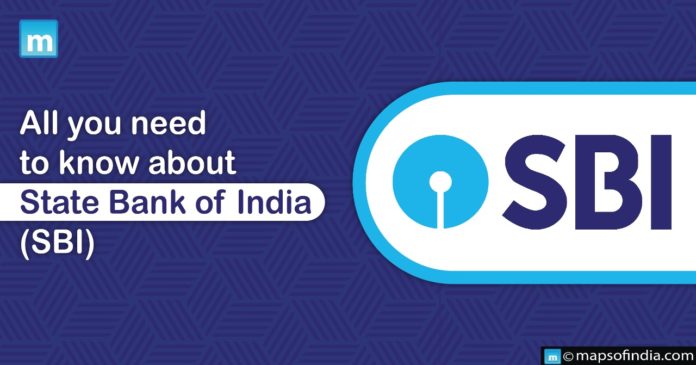State Bank of India (SBI) is an Indian international public sector bank and statutory financial services organization headquartered in Mumbai, Maharashtra. It is the world’s 43rd most significant bank, ranking 221st on the Fortune Global 500 list of the world’s largest firms in 2020 and the sole Indian bank.
SBI is India’s most prominent public sector bank, with a 23% market dominance by assets and a 25% share of the overall loan and deposit market. With approximately 2.5 million people, it is also India’s sixth largest employer.
Let us now discuss SBI’s origin:
- The origins of the State Bank of India could well be traced back to the first decade of the nineteenth century. The Bank of Calcutta subsequently referred to as the Bank of Bengal, was founded on June 2, 1806.
- The Bank of Bengal was one of three Presidency banking institutions, along with the Bank of Madras and Bombay. These three Presidency financial institutions were established as joint stock firms after the passage of royal decrees.
- These banks had the sole power to issue paper currency until 1861 when the government of India took control with the Paper Currency Regulation.
- The Presidency banks merged on January 27, 1921, and the reorganized financial organization was known as the Imperial Bank of India, which continued as a joint-stock business with no government involvement.
- Consequently, the Reserve Bank of India, India’s central bank, acquired a majority shareholding in the Imperial Bank of India under the State Bank of India Act of 1955. The Imperial Bank of India was later renamed the State Bank of India on July 1, 1955.
- Because the RBI is the national banking regulatory authority, the government of India bought the Reserve Bank of India’s holding in SBI in 2008 to avoid any conflict of interest.
Domestic Presence
- In India, SBI has approximately 24,000 branches. In the fiscal year 2019-20, its revenue was Rs. 3 trillion, with domestic activities accounting for 95.35% of revenue. Furthermore, domestic operations accounted for 88.37% of total profits in the same fiscal year.
- Moreover, SBI organized 11,300 financial inclusion camps under the Pradhan Mantri Jan Dhan Yojana, which the government started in August 2014, and opened nearly 3 million accounts by September of the same year, including 2 million accounts in rural regions and 1.6 million accounts in urban areas.
International presence
As of 2021-22, the institution had roughly 200 offshore offices distributed across 36 countries, making it the Indian bank with the most presence in international markets.
It is present in many nations throughout the world. Some of them are as follows:
- SBI, Sri Lankan
- USA SBI
- Australia SBI
- SBI UK
- Bahrain SBI
- SBI in South Korea
Formerly affiliated banks
- In 1960, SBI took ownership of seven banks. They were the provincial banks of former princely kingdoms in India. Namely, State Bank of Mysore, Jaipur, Patiala, Hyderabad, Saurashtra, Indore, and Bikaner.
- Plans to consolidate the partner banks into SBI to create a single major bank began in 2008, and SBS (State Bank of Saurashtra) joined with SBI in September of that year. The following year, the State Bank of Indore (SBN) also merged.
- Finally, the Union Cabinet confirmed the amalgamation of the remaining five affiliate banks with SBI on February 15, 2017.
Non-banking affiliates
Aside from five partner banks (which have been amalgamated with SBI effective April 1, 2017), SBI’s non-banking entities include:
- SBI Capital Markets
- SBI Mutual Fund
- SBI Life Insurance Company Limited
- SBI Cards & Payments Services Pvt. Ltd.
SBI’s services
- The SBI organization had roughly 60,000 ATMs as of March 2022.
- SBI has also provided a unified digital banking platform called YONO since November 2017.




